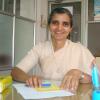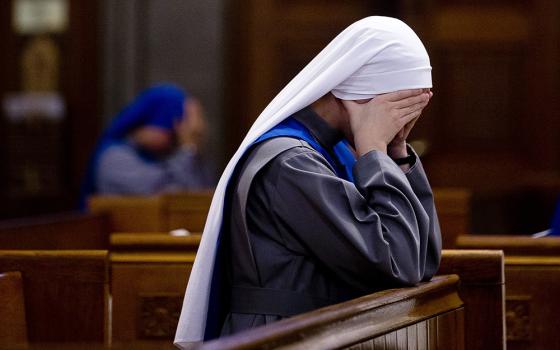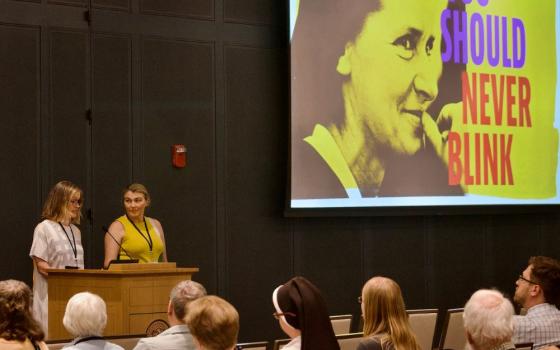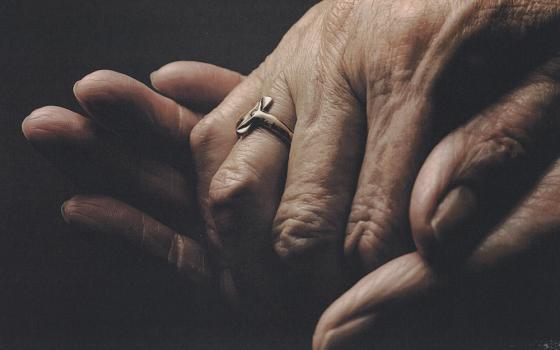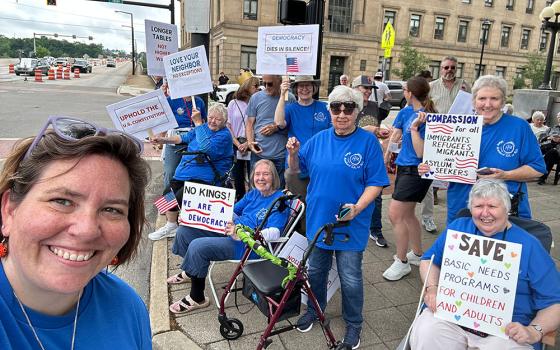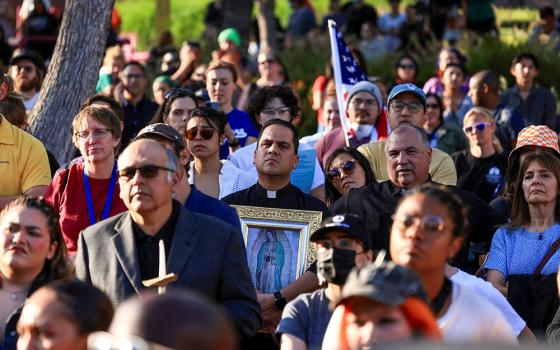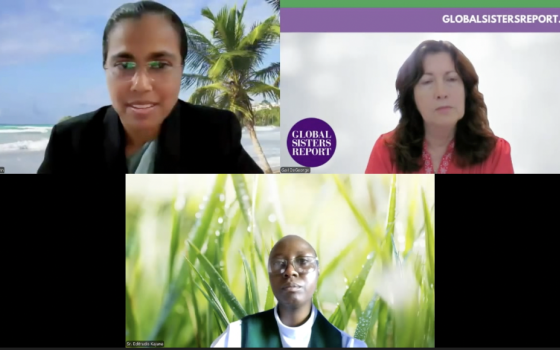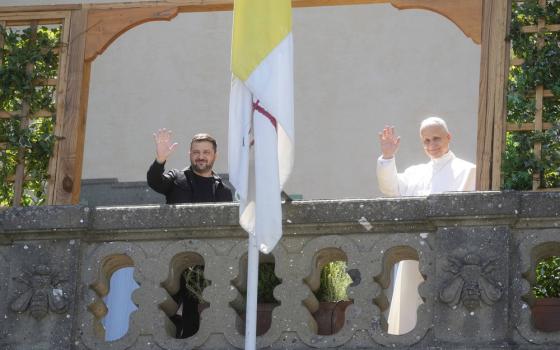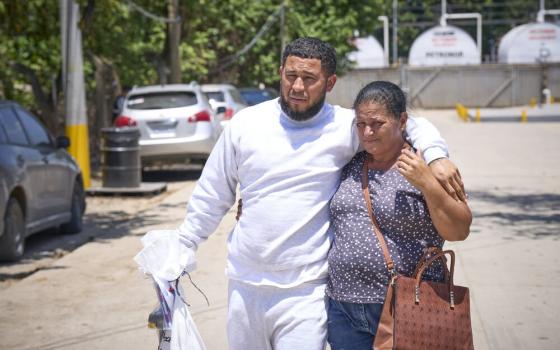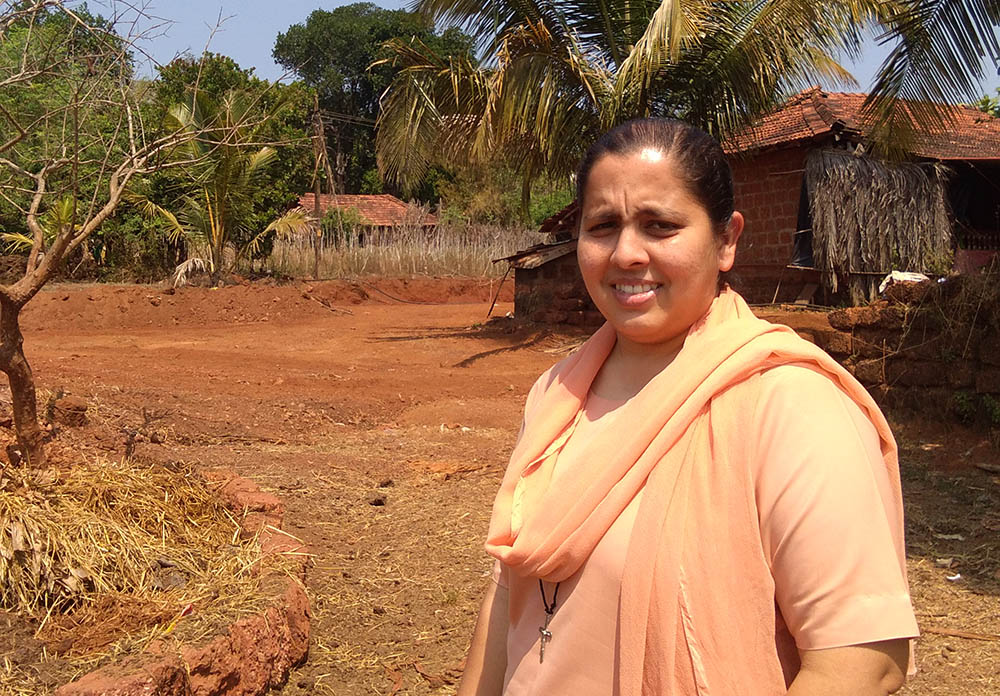
Sr. Crina Cardozo of the Sisters of Holy Family of Nazareth on her way to visit the Dhanger tribe in Fullamol village in Goa, western India (Lissy Maruthanakuzhy)
Editor's note: This Q&A was completed before the pandemic worsened in India and does not reflect the current reality of COVID-19 in the country.
Sr. Crina Cardozo of the Goa-based Sisters of Holy Family of Nazareth has been visiting tribal people in the hilly areas of the western Indian state for the past six years. The 38-year-old nun walks miles to visit the houses, which are situated far apart in a forest, to teach academics to children and career-oriented courses for women and youth. The houses are divided into wards that cover a 7-kilometer radius, and she has adopted six.
The strenuous journeys have taken a toll on Cardozo, who had to go for treatment for her ailing back. After her recovery in February, she returned to her mission. She says nothing can keep her from serving the downtrodden and those on the periphery.
Cardozo shared with Global Sisters Report about her mission among the tribal people of Goa.
GSR: When did you begin your mission among the tribal people and why?
Cardozo: To work for the poor has been my passion. When I shared this with my superiors, they suggested that I study social work. A year after my first vows in 2003, I went to Mumbai [in western India] to join the Nirmala College of Social Work. As we have no community there, I stayed in a hostel. During my college days, I got several opportunities to work with HIV patients and slum-dwellers.
After my master's degree in social work, I worked two years with female sex workers, their children, and orphans of parents with HIV at Baina, a beach in Goa. After my final profession in 2009, I reminded my superior general about my desire to work with the poor. She responded: "There are only a few dreamers like you."
She encouraged me to join our house at Canacona that was registered for social work. The tribal people live near the convent.
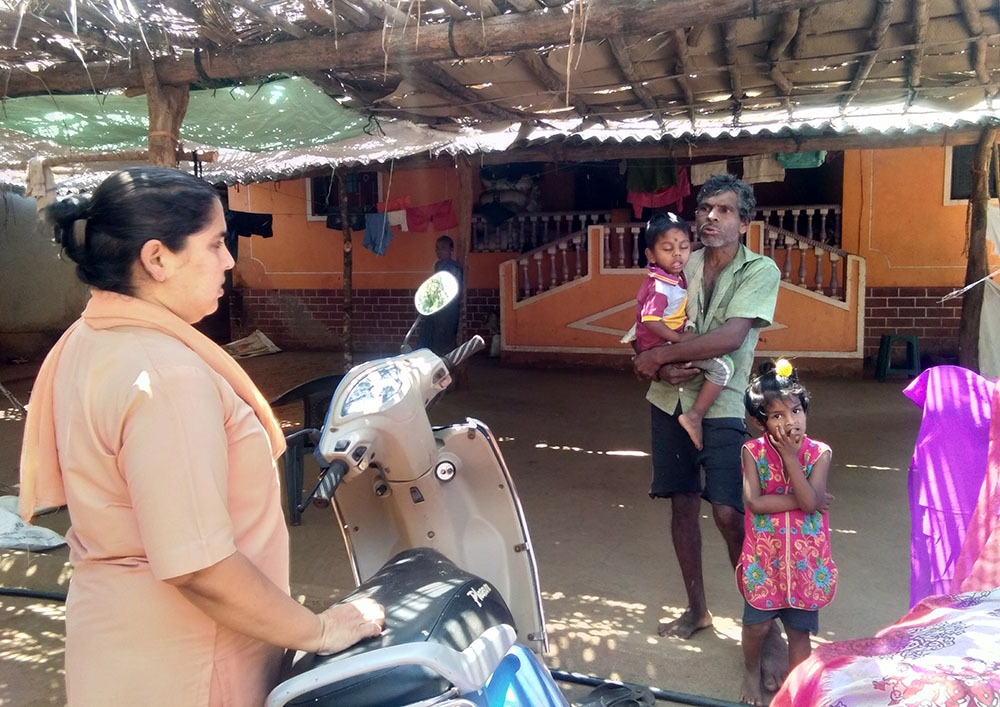
Sr. Crina Cardozo of the Sisters of Holy Family of Nazareth talks to the husband of a tribal woman in Karvem village of Goa, western India. (Lissy Maruthanakuzhy)
Did you face any problems initially?
Before I began my work, I met with the sarpanch [village council chief] and the local member of the state legislative assembly and explained my plan to help the tribal community in the forest. They were reluctant to allow me at first, saying I would be wasting my energy.
Seeing my determination, they allowed me to start. However, they kept a close watch on me. When some people complained to the legislator, he asked them if there was anyone else who could help the members of the tribes as I was doing. After that, no one complained.
How many tribal people are there?
There are about 4,000 people who belong to two tribes. Both depend on the forest. The Dhangar tribe rears goats and buffalo while the Velip tribe lives on cultivation. Many live on the mountains. Some have agricultural land while others work for them.
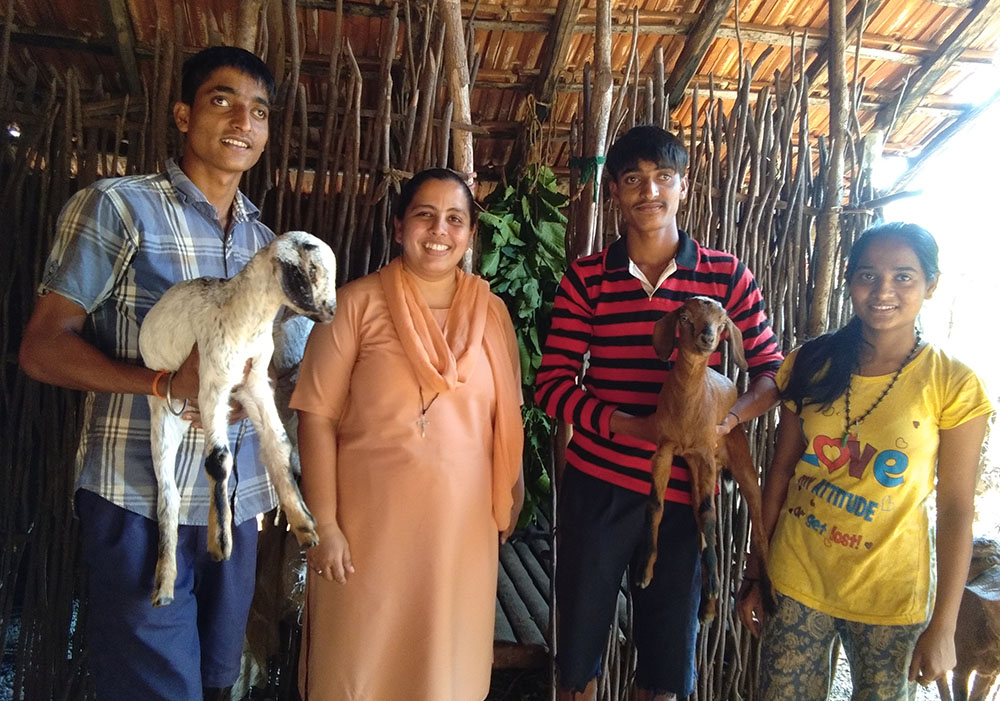
Sr. Crina Cardozo of the Sisters of Holy Family of Nazareth with Dhangar tribe siblings showing their young goats in Fullamol village in Goa, western India (Lissy Maruthanakuzhy)
The area is divided into nine wards, and I work in six. I visit them regularly, ward by ward, to understand their needs and problems. At first, I worked in only one ward. Seeing my work there, other wards invited me.
What do you do when you are with the members of the tribes?
My first priority was to win their confidence. After people realized that I am there to help them, they confided in me their problems.
I organize tailoring classes for women and young girls. Tailoring has brought them income. We also take tuition for primary school students. I started it by gathering all children in one family. Now, it is done in different houses. I organize teachers, and the state government pays them.
Daily tailoring classes are held in our convent premises for women. We also conduct follow-up classes twice a week for former tailoring students. One teacher is paid partially by the municipality. The rest we pay from our funds. The women after training organize tailoring classes in their houses for their neighbors.
Some young people from the mountain walk one and a half hours to attend the tailoring class conducted in the plains. I visit their houses to get a better understanding of their life situation. I travel by bike to the foot of the mountain. The travels have affected my health.
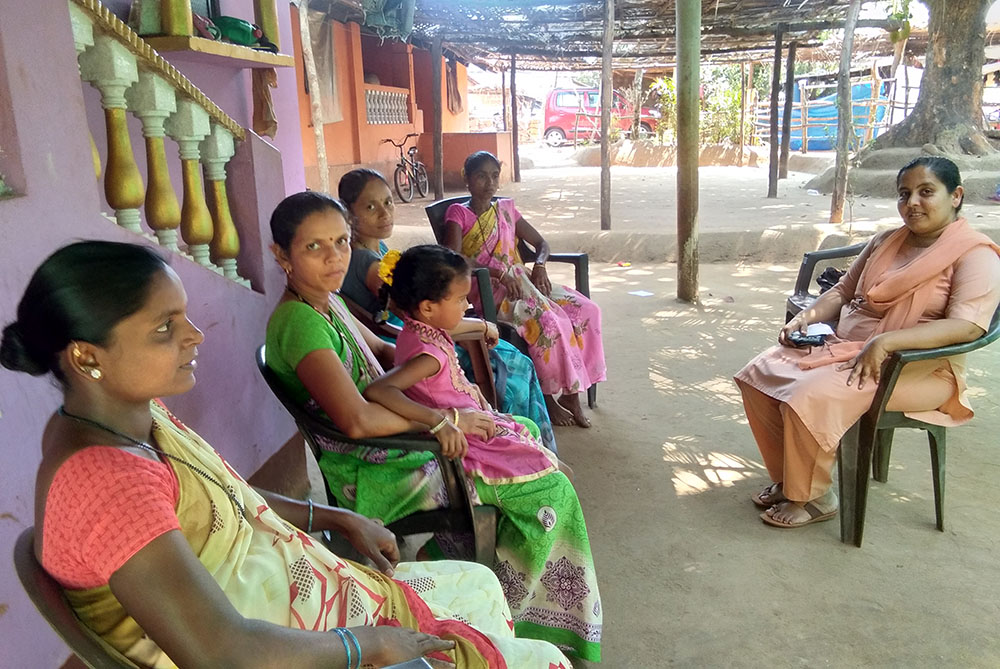
Sr. Crina Cardozo of the Sisters of Holy Family of Nazareth with a group of young women at a tailoring unit at Karvem village in Goa, western India (Lissy Maruthanakuzhy)
How do you raise funds?
In Goa, tiatr [drama] is a part of our people. They use this form to inform the public about social issues, educate them and form public opinion. I invite every year such a group to perform in our parish. I print tickets to sell and visit families to invite them. After paying the tiatr group their fees, I get a good margin to use for the year.
Our parish has 50 Catholic families who are cut off from the tribal area. I shared with the parishioners about my work during my visits to their homes. In the beginning, people did not understand my intention. Now, they ask me when I will organize the next tiatr.
Some donate a sizeable amount instead of buying our tickets. They know I make good use of the money to help children's education, conduct career-oriented training, and use it for conveyance, treatment and hospital expenses of the sick.
What do they cultivate?
They have rice paddy cultivation for six months of the year. They sell the produce in the local market. The other six months, they grow different vegetables for their use. They eat only what they produce.
They told me with pride that during the pandemic lockdown, they did not lack food, as everything was available from their fields. They also generously share what they have with others.
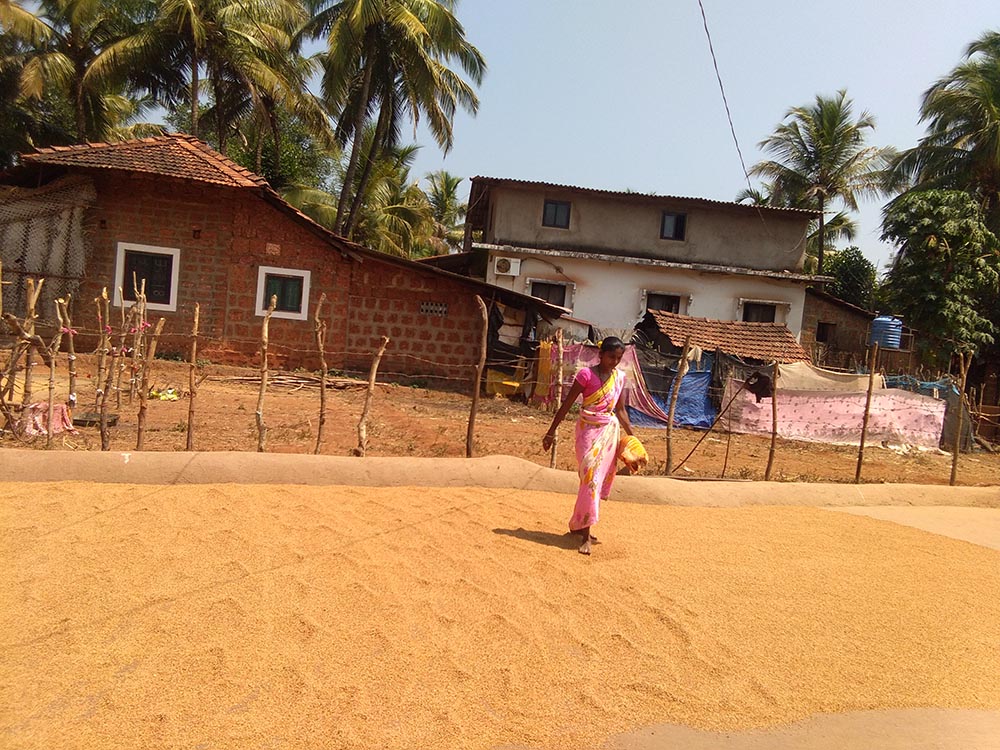
A woman dries rice paddy in the sun at Karvem village of Goa, western India. (Lissy Maruthanakuzhy)
What were the challenges the villagers faced that you helped to solve?
Children had no one to guide them in their studies after they return from the school. I organized classes and appointed teachers to help students understand their lessons better and do well in their studies.
When I reached there, the women only worked in the fields. So I taught 50 women tailoring so that they do not depend on their husbands financially. I also help them with career guidance. The youth get updated about various job opportunities. I help them choose a career suited to their aptitude. We conduct regular health awareness programs. Regular visits help me know their needs.
The literacy among the tribal people is about 90%. However, most have studied only up to the ninth grade. Some reach 12th. About 10% go to college or join professional courses.
Those in the agricultural sector earn around 80,000 to 100,000 rupees [$1,074 to $1,342]. A few are in the government jobs and earn about 300,000 rupees annually.
What changes have you noticed after you started working with the people in the tribes?
People have told me that they have learned many things after I came to their village. They now appreciate the importance of education. They have also learned to save to improve their economic status.
They called me when a Dhangar girl in Fullamol village fell from a tree. I arranged for taking her to a hospital in the city two hours away. Now, she has returned to normal health. She had climbed the tree to cut leaves for her goats.
Advertisement
One teenage girl got pregnant. She had no mother. When her father learned about it, he was furious and disowned her. When the father heard that I was helping her, he was angry. He told the neighbors why I wanted to help his daughter when the family had disowned her. "If I see her [Cardozo], I will kill her," he told the neighbors.
People told me to stay away for some days until he cooled down. The tribal people always carry a big knife that they use for various purposes. In anger, they would do anything with it. It is quite frightening for an outsider like me. I did not go to the villages for two days. Then I resumed my normal routine.
I met the two aggrieved families separately and settled the matter amicably. The boy had refused to marry the girl, saying his family did not support him. The girl refused to abort the child as the boy's family demanded. Things changed after I talked to the families. The boy and the girl are married and live happily with the child now.
In another case, a 51-year-old woman in Karvem village was admitted to the hospital with cancer. She had no one to stay with her except her husband. When I visited her, I found her in a pool of blood. I helped her change clothes and did all that was required.
Do you get support from your congregation?
My congregation is my backbone. I live in a community of three sisters. While my two companions run a primary school, I go in the morning to the tribal areas. In the beginning, my congregation provided money to organize programs. Now, I raise funds on my own.
